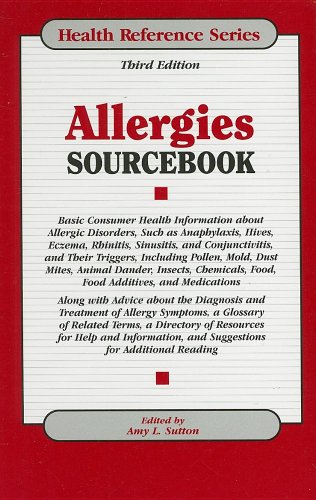
Book
|
Allergies sourcebook : basic consumer health information about allergic disorders, such as anaphylaxis ...
Copies
1 Total copies, 1 Copies are in,
0 Copies are out.
Title
Allergies sourcebook : basic consumer health information about allergic disorders, such as anaphylaxis ...
Call No
RC584 .A3443 2007
Edition
3rd ed.
Authors
Language
English
Published
Detroit, MI : Omnigraphics, c2007.
Publication Desc
xviii, 616 p. : ill. ;
ISBN
9780780809505
LCCN
2007011738
Target Audience
Unknown or not specified
Dimensions
24 cm.









